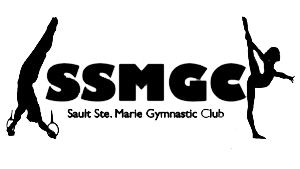Why Our Youth Need Strength and Conditioning Activities Led by Strength and Conditioning Coaches
The sole intention of youth-focused training programs should not be to increase muscle size. Under certain circumstances increased muscle size can be an adaptation to training however there are plenty of other objectives that should be the main focus of a strength and conditioning program for our youth.

Our youth today are physically unprepared more than ever due to increasing number of sedentary lifestyles. Athletic organizations, secondary schools and the workforce are starting to see the negative effects of unfit youth as they age. As the need to serve a growing population of unprepared youth rises, the need for high quality youth strength and conditioning programs has never been greater. What’s more is when left to their own devices, youth lack consistency, discipline and awareness of proper movement patterns and when relying on the physical education program in schools who are using misguided or outdated information and emphasize team sports and games in their lessons, youth miss developing foundational capacities gained from the programming that strength and conditioning can provide.
As parents, it is important to recognize programs that are designed with the following objectives in mind as well as what to expect from a qualified strength and condition coach designing and leading these workouts and activities.
Safety and Support
Body-weight exercises and light to moderate weightlifting can help build stronger bones, increase bone mass, reduce the risk of injury and help youth play and move better. While in a training program, participants begin to realize how important listening to the coach, staying focused and competing with/against others is to their own success. From here a community is established.
Whether youth participate in group classes or in a one-on-one setting, it is the responsibility of the coach to lead all youth safely through playful exercise and embody a supportive environment. A safe and supportive environment should; promote active and long term participation, have inclusive and adaptable progressions for any movement or exercise, be multimodal – include various physical, cognitive and emotional skill development activities – incorporate play and feature a positive reinforcement behavior approach.
Improved athleticism
Optimal sports performance is the culmination of successful training for a substantial amount of time with the focus on foundational systems such as conditioning, gymnastics and weightlifting. Although improved athleticism is a desired response and strong motivator for youth athletes – the development and continued refinement of these foundational systems are important for ALL youth. Childhood is the ideal window to influence proper motor and movement skills for daily life and when sport isn’t the focus for participation – fulfilling age appropriate fitness requirements and improving fitness criteria should be. The criteria most relevant to youth being; 1) Cardiovascular fitness 2.)Coordination, balance and agility through vestibular training 3) Strength through neuromuscular response to body-weight movements until mechanics are consistent enough and bone density as well as hormone balance, warrant the use of light to moderate weight training.
Increased awareness, knowledge and understanding of healthy habits
Again, childhood is the ideal window to influence proper motor and movement patterns but more than that is to establish interest and joy in the process. Using the most current and up to date research on strength and conditioning and healthy active living, coach led programs can and should be teaching youth the WHY along with the HOW for physical, mental, nutritional, emotional and social skills.
Improved cognitive and academic performance
We see in the literature that there’s definitely improved mood, a much more positive outlook on life, increased self-esteem, improved cognitive performance and reduced anxiety and stress as a result of exercise. Beyond those benefits however, from a coach led training program, children can start to make connections between effort and result, engage in systematic and process driven thinking and learn from failure rather than to avoid it.

Improved social skills
The coach knows how important it is to keep a balance between competition and support among all participants and encouraging effort – not necessarily result – has greater long term benefits. For example Youth A does 20 pull ups and Youth B does 5 pull ups. Praising result would mean that Youth A has done a better job either training and/or performing their pull ups than Youth B. Entirely not the case when looking at it from an effort point of view. Youth A may have had more training, or less body weight to pull or performed 20 ugly and questionable reps for the sake of a high score. Under a coaches supervision and guidance a quality of movement standard is enforced and this event is an opportunity to highlight both efforts and create a motivating environment for Youth B to work toward catching Youth A’s score or at least beating their own previous score of 5 next time while at the same time encouraging each youth to congratulate each other on the days pull ups.
